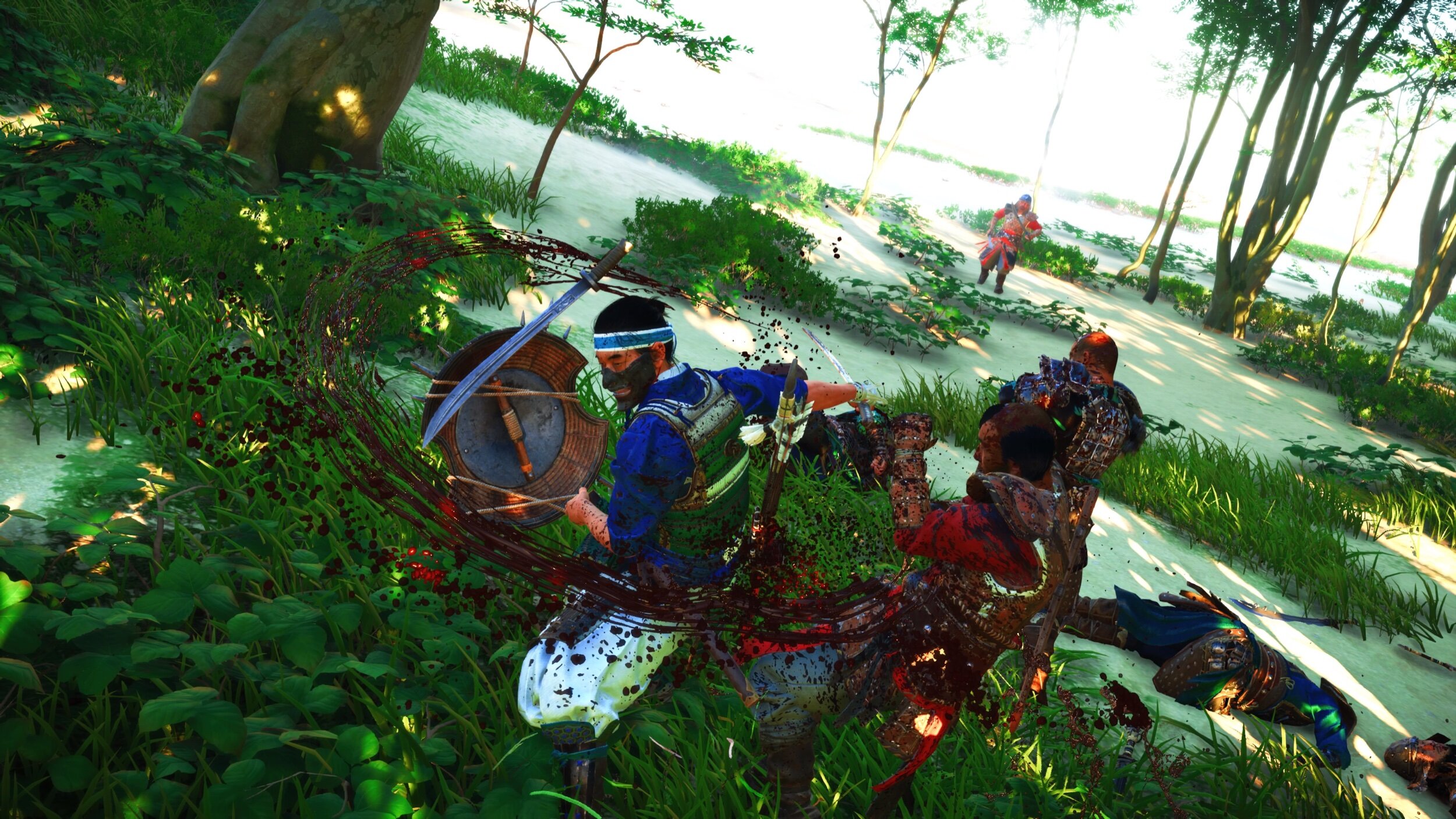Scenes from Tsushima
Ghost of Tsushima is a third person, open world, action game for the PS4. It released on July 17th after years of anticipation and, at least through the first act, it lives up to the expectations. Having not completed the story mode I wanted to share my initial impressions as well as some of the more eye catching moments from the game’s early hours.
Ghost is inspired by a real historical event, the Mongol invasion of Japan. The Mongol fleet landed on the island of Tsushima in 1274 with nearly 10,000 soldiers. Tsushima responded with a samurai force of about 80. That battle went as one would expect and serves as the starting point for players. The opening moments are where the similarities to the actual invasion end. In Ghost of Tsushima players assume control of Jin Sakai, the young leader of clan Sakai, who fought the Mongols at Komoda Beach. After the battle Jin’s uncle, his only remaining family, is captured and held hostage on the northern part of the island. Jin travels to the castle to free his uncle, fails and barely escapes with his life. From here the island is open to the player, you can tackle the Tales of Tsushima in any order you’d like.
The object of the game in the early going is to level up Jin’s abilities and recruit as many allies as possible to rescue Jin’s uncle, Lord Shimura. You go about this by traveling the island and finding people in need of help. Whether it’s tracking down traitors, freeing loved ones from Mongol camps, or helping groups find food to survive Jin is ready and willing to lend a hand. These missions are structured similar the loyalty missions in Mass Effect 2. Friend has a problem, you agree to help them solve it, it plays out over several missions and upon successful completion that friend agrees to help you later. These missions can get a bit repetitive and since you can take them on in any order there were a few times I felt Jin was not strong enough for a particular challenge, but in general the open structure makes it easy to bounce around and pick up whatever storylines interest you at the time.
From a gameplay standpoint this is very much modern Assassin’s Creed. Large map, completely open, lots of side quests and diversions, resource collection, enemy camps with leaders and 3-4 objectives, and even tall grass to hide in when you don’t want to go the samurai route and announce yourself to a convoy of Mongol soldiers. However, the biggest similarity to Assassin’s Creed and Tsushima’s biggest strength is an incredible attention to detail in creating the setting. The countryside is dotted with shrines, hot springs, and places to meditate and compose haiku, while the architecture and soundtrack immediately call to mind scenes from epics set in feudal Japan. Weapons and clothing are exquisitely modeled and every collectible is tied into Japanese culture and history.
When it comes to clothes and weapons, you are allowed a modicum of customization in those areas. Jin can pick from several sets of armor whose appearance changes with upgrades. You’re also allowed to mix and match masks and hats, for instance I’ve taken to wearing traditional samurai armor with the straw hat of a wandering ronin. One of the resources you collect is flowers, these are used to dye your clothing. The colors are preset but are well designed and everyone should be able to find an outfit that suits them. Flower dyes are used to customize the look of your weapons as well. You are outfitted with a katana, tanto (short sword) and half bow to start. The sword kits have rather enticing names such as Emperor’s Tears and Shogun’s Storm and gorgeous designs that left me agonizing over how to spend my precious flowers.
Customization matters because of that old axiom: Look good, feel good, fight good. Nobody wants to take on Khan’s crew looking like a bum, and fighting, whether one on one or against a group, is how you’ll spend the majority of your time. Swordplay in Ghost of Tsushima is simple and stylish, relying heavily on parries and dodges that allow Jin to cut his way through multiple enemies in a single encounter. Jin has several stances he can switch between, each effective against a particular type of soldier. As you progress Jin will acquire various accessories to help out in larger skirmishes: throwing knives, explosives, smoke bombs and distraction devices to name a few.
If head on is not your style, you also have the option to sneak around and assassinate unsuspecting foes at your leisure. If even that is too much for you, you can also hang back and pick off guards with your bow. There are several options to attack each situation but the best and most addicting is the standoff. When near opponents you’ll be prompted to challenge them openly to one on one combat, at which point you’ll have the opportunity to pull off a slow mo, one hit kill (upgrades allow you to dispose of up to three enemies in a standoff), before engaging in open combat with the remaining Mongols.
Jin Sakai has many different fighting styles, custom armor and weapons, interesting allies and a flat out gorgeous setting to explore. What he doesn’t have is personality. The biggest flaw in Ghost of Tsushima is its lack of a compelling main character. Jin has a tragic past, a need for revenge and a conflict begging for a hero but it’s difficult to care about him in any meaningful way. So far it’s been a fairly minor issue but I worry that as the narrative ramps up, my interest will nose dive because of the Ghost himself. That said, with regards to gameplay, graphics, sound, and voice acting Ghost of Tsushima is a worthy full price purchase.






